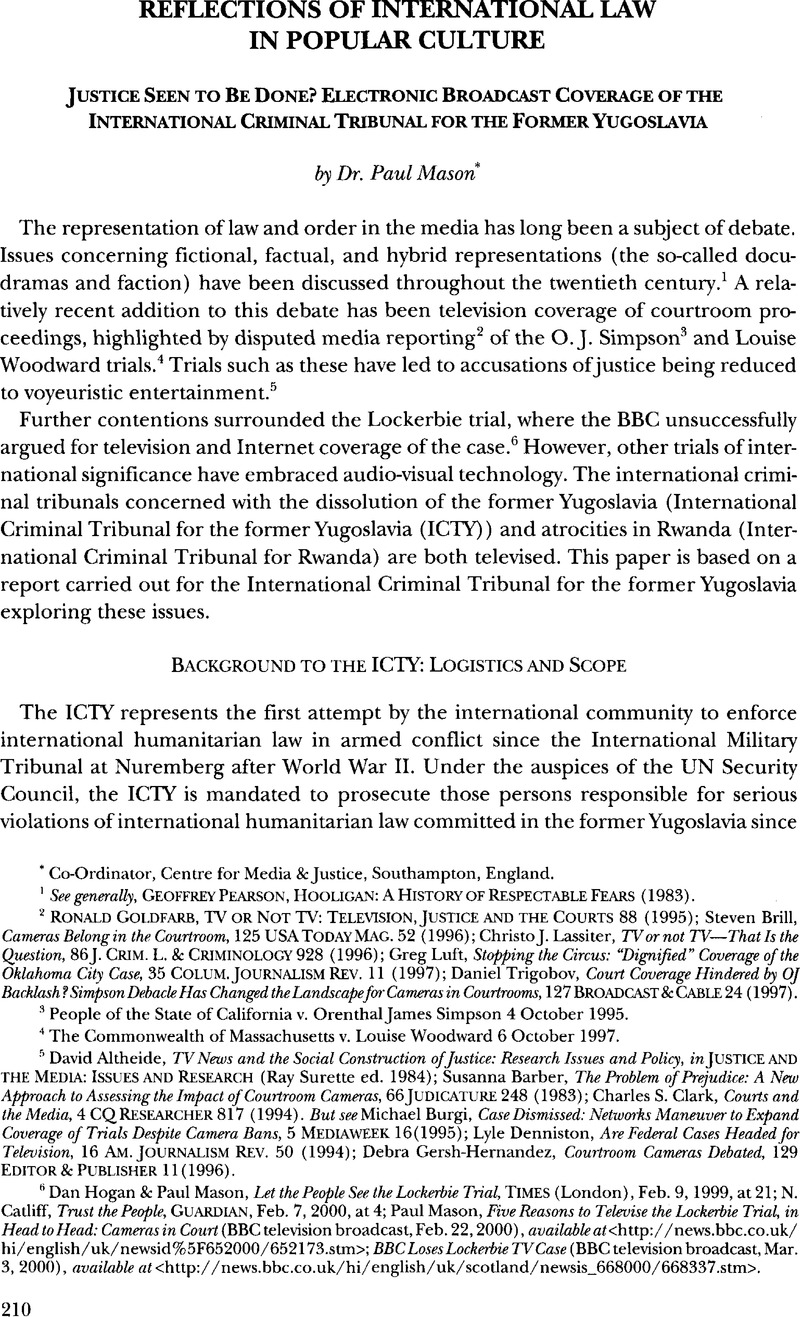No CrossRef data available.
Published online by Cambridge University Press: 28 February 2017

1 See generally, Geoffrey Pearson, Hooligan: A History of Respectable Fears (1983).
2 Ronald Goldfarb, Tv Or Not Tv: Television, Justice and the Courts 88 (1995); Brill, Steven, Cameras Belonging the Courtroom, 125 USA Today Mag. 52 (1996)Google Scholar; Lassiter, Christo J., TV or not TV—That Is the Question, 86 J. Crim. L. & Criminology 928 (1996)CrossRefGoogle Scholar; Luft, Greg, Stopping the Circus: “Dignified” Coverage of the Oklahoma City Case, 35 Colum. Journalism Rev. 11 (1997)Google Scholar; Trigobov, Daniel, Court Coverage Hindered by of Backlash? Simpson Debacle Has Changed the Landscape/or Cameras in Courtrooms, 127 Broadcast & Cable 24 (1997)Google Scholar.
3 People of the State of California v. Orenthal James Simpson 4 October 1995.
4 The Commonwealth of Massachusetts v. Louise Woodward 6 October 1997.
5 Altheide, David, TV News and the Social Construction of Justice: Research Issues and Policy, in Justice and the Media: Issues and Research (Surette, Ray ed. 1984)Google Scholar; Barber, Susanna, The Problem of Prejudice: A New Approach to Assessing the Impact of Courtroom Cameras, 66 Judicature 248 (1983)Google Scholar; Clark, Charles S., Courts and the Media, 4 CQ Researcher 817 (1994)Google Scholar. But see Burgi, Michael, Case Dismissed: Networks Maneuver to Expand Coverage of Trials Despite Camera Bans, 5 Mediaweek 16 (1995)Google Scholar; Denniston, Lyle, Are Federal Cases Headed for Television, 16 Am. Journalism Rev. 50 (1994)Google Scholar; Gersh-Hernandez, Debra, Courtroom Cameras Debated, 129 Editor & Publisher 11 (1996)Google Scholar.
6 Dan Hogan & Paul Mason, Let the People See the Lockerbie Trial, Times (London), Feb. 9, 1999, at 21; N. Catliff, Trust the People, Guardian, Feb. 7, 2000, at 4; Paul Mason, Five Reasons to Televise the Lockerbie Trial, in Head to Head Cameras in Court (BBC television broadcast, Feb. 22,2000), available at <http://news.bbc.co.uk/ hi/english/uk/newsid%5F652000/652173.stm>; BBC Loses Lockerbie TV Case (BBC television broadcast, Mar. 3, 2000), available at <http://news.bbc.co.uk/hi/english/uk/scotland/newsis_668000/668337.stm>.
7 Fact Sheet on ICTY Proceedings, Apr. 18, 2001, available at <http://www.un.org/icty/glance/profact-e.htmx>
8 SC Res. 827, Arts. 2-5 (May 25, 1993), reprinted in 32 ILM 1203 (1993).